Lumen, a human perspective
An important characteristic of luminaires is luminous flux, expressed in lumens. But what is lumen? In an earlier article, we compared the luminous flux from a lamp to the flow of water from a tap, and in this very simple analogy, lumen then corresponded to the flow rate. Turning the tap further open or closed was like dimming or turning the lamp harder. In this article we explain it a little more scientifically, and link it to the sensitivity of the eye.

Reading time: 4'30"
Visible light and the electromagnetic spectrum
Light is radiation: electromagnetic waves containing a certain amount of energy. However, visible light is only a small part of the electromagnetic spectrum, located between short (high-frequency) waves such as X-rays, and UV radiation on the one hand, and longer (low-frequency) waves such as infrared, microwaves, and radio waves on the other.
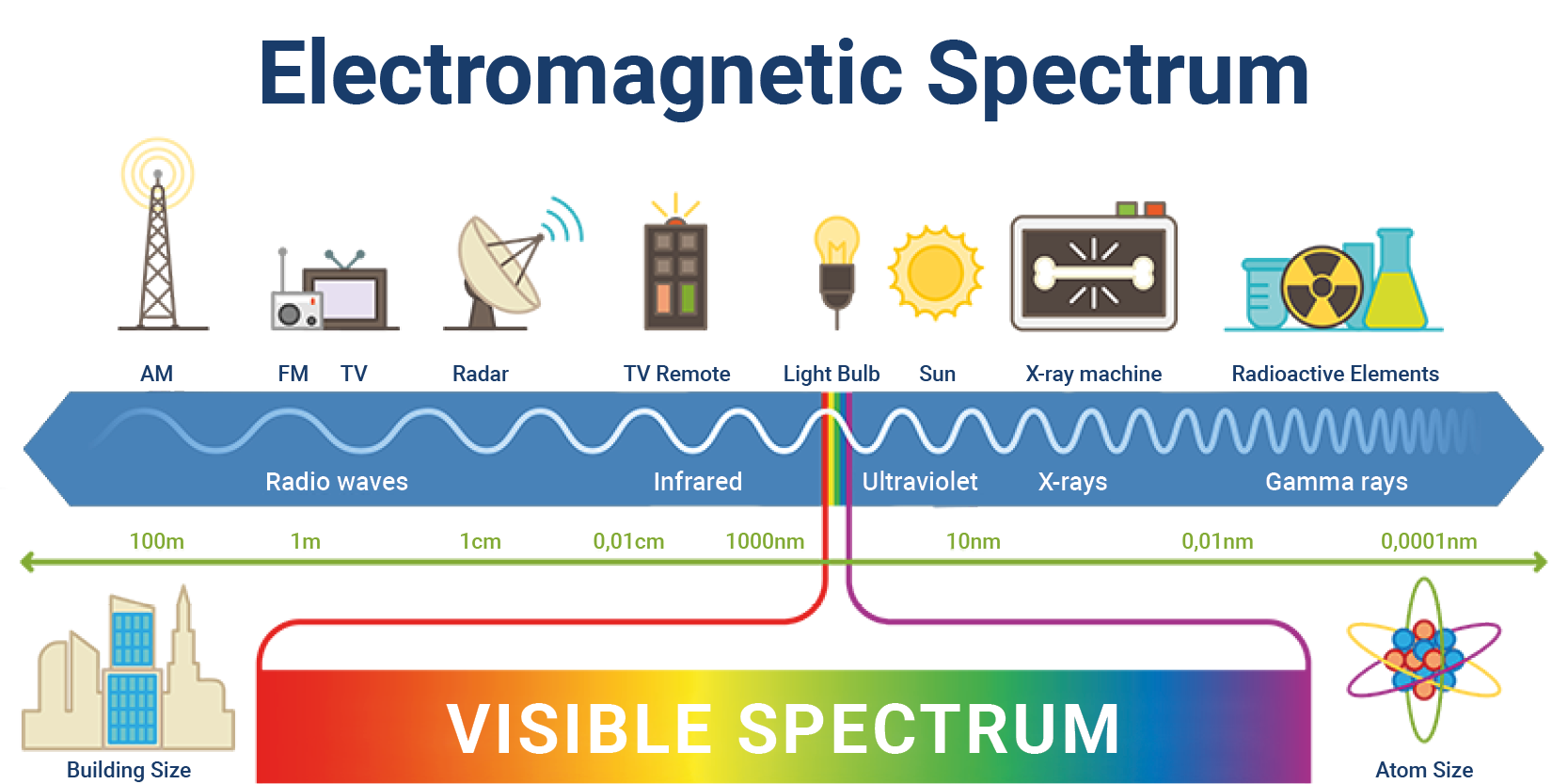
So to determine the amount of light emitted by a lamp, we need to measure how much energy is emitted in the visible part.
The delicate human eye
Here, the sensitivity of the human eye is also important. Our eyes detect light and colour thanks to the cones: these are light-sensitive cells located on our retina, at the back of the eye. There are 3 types of cones, each sensitive to a different colour of light. The response of the cones (and interpretation of them in our brain) provides photopic vision, and works at a good level of illumination, for example during the day.
When there is low light, our vision is enabled thanks to rods, which are also located on our retina. The rods do not distinguish between colours. This is scotopic vision, and ensures that we can see at low lighting levels, for example at night. Colours are not perceived by scotopic vision.
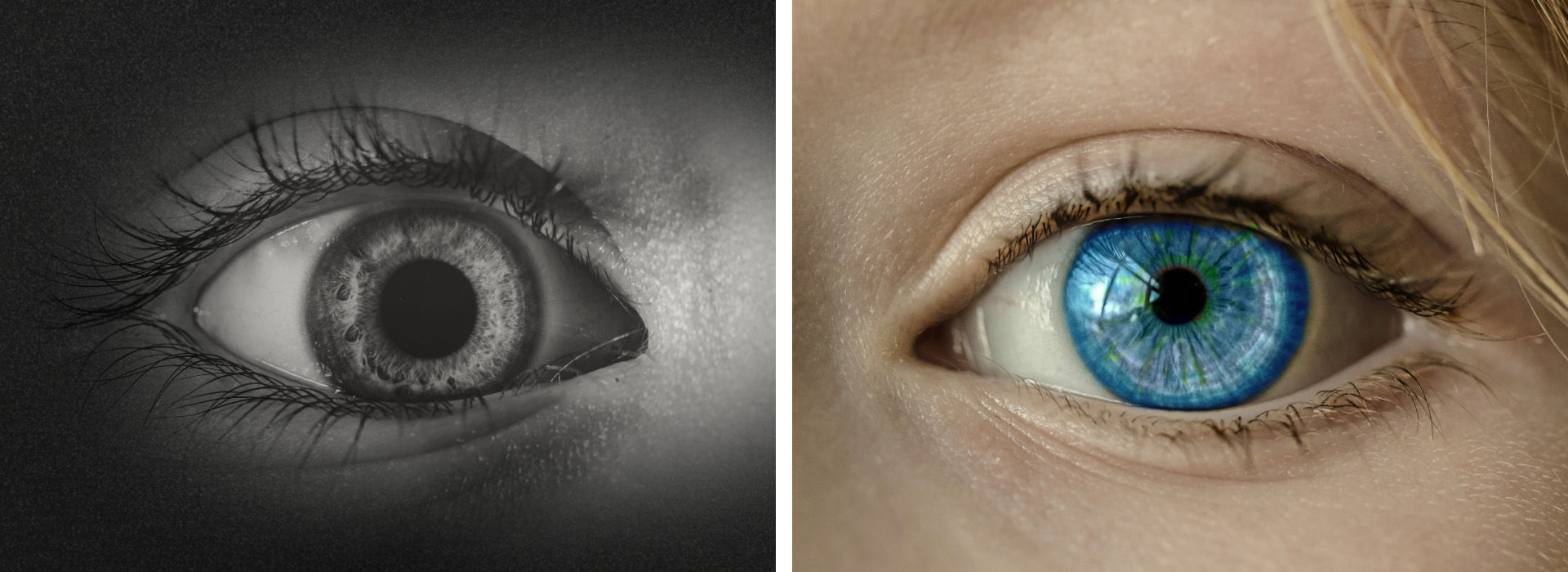
During the day: photopic vision with the cones: colour vision, narrowed pupil
The definition of lumen
The CIE (International Commission on Illumination) has defined an official photopic eye sensitivity function.
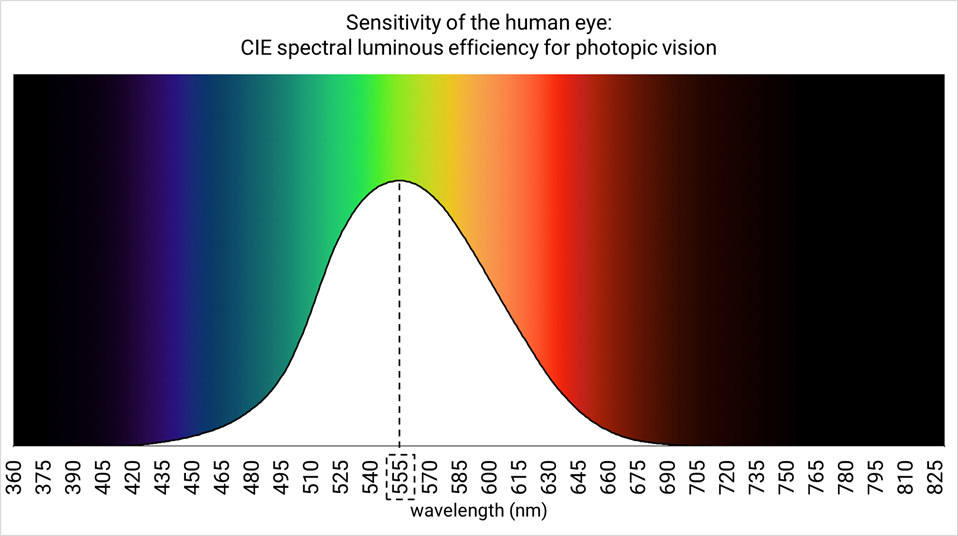
This curve shows that the human eye is most sensitive in the green part of the spectrum. Peak sensitivity lies on the electromagnetic waves with a wavelength of 555 nm (nanometres, one millionth of a millimetre).
The definition of lumens is directly linked to this: by definition, a green monochromatic light beam with wavelength of 555 nm has an efficiency of 683 lumens/Watt.
This is the constant Kcd : 683 lm/W. It is one of the seven constants used in the metric system to describe our universe. The special thing about this constant is that it is the only one directly linked to humans, and how we see the world.
The unit lumen is thus defined as the power emitted by a light source multiplied by the photopic eye sensitivity function.
Why 683 lumens/Watt?
‘A green monochromatic light beam with a wavelength of 555 nm and a power of 1 Watt, by definition, has a luminous flux of 683 lumens.’ This arbitrarily defined value, is the result of earlier historical methods of imposing a normalised value for luminous flux.
The very first calibration methods to characterise the brightness of a light source worked with normalised candles of a certain weight and material.
To capture this more precisely, since 1933 luminous flux was calibrated using a black emitter with solidifying platinum (at a temperature of 1773°C). Then again, because this was not very practical, and thanks to advances in radiometry, the current definition was adopted in 1979. The value of 683 lm/W was chosen so that the resulting measured values correspond to the old definition.
The most efficient light
The consequence of this definition of lumens, using this curve, is that green light is the most efficient light. If we emit the same amount of energy in red light, the luminous flux is only half as large, because the eye is only half as sensitive to it.
The same applies to blue light. A practical example of this is a variant of ETAP's E2-ATEX luminaire, which emits blue light. This luminaire illuminates the locations of eye showers in the chemical industry with a very prominent blue light.

With a consumption of 44 watts, this luminaire has a blue luminous flux of 1100 lumens, or an efficiency of 25 lm/W. This may seem low, but is explainable when you realise that the luminaire emits only blue light with a wavelength between 450 and 465 nm - as shown on the curve.
So the highest-performance lamp one could theoretically build would only emit monochromatic green light at 555 nm, and have a maximum efficiency of 683 lm/W. As soon as one emits light in a wider spectrum, the efficiency will automatically drop. This also explains why devices with a higher CRI value often have to sacrifice a little on lumen/Watt. They spread the light over a slightly wider spectrum.
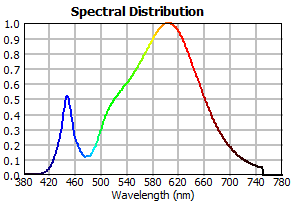
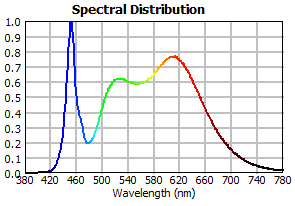
We see the light
Light is more than just a physical phenomenon; it is a symbol of knowledge, hope, and life. The light of the sun is the source of all life on earth, and enables us to perceive the world around us. Lumen, the unit that measures luminous flux, is a bridge between the abstract world of electromagnetic waves, and our sensory experience. Of all scientific units (such as kilogram, second, metre, etc.), lumen is thus our favourite, because its definition is directly linked to how people perceive the world and the universe.

Adriaan Van Nuffel is our product manager for industrial and emergency lighting. Every day, he enthusiastically explores the latest technologies and trends, seeking innovative solutions to fulfill the lighting needs of the market. This way, ETAP continues to stay ahead in the lighting market.
Contact:
+32 (0)3 310 02 11 [email protected]



